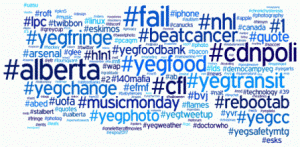There are three keys to getting an agent and a subsequent book deal.
1. A big and bold idea
2. Excellent writing
3. An undeniable platform
Here’s some encouraging news: You only need two of the three to succeed. All three would be fantastic, but only two are required.
Every book starts with an idea. But many of these ideas will be seen by publishers as “small.” In the language of agents and editors, a good idea is a big idea. But what does that mean? Why would any idea be “small”? And how do you know if yours is big enough?
This is the first metric you have to get right. I can solve a lot of problems for my authors, but if their idea doesn’t work, I can only do so much to dress up the pitch. To discover your big idea, there are proven tactics that will command the attention of a literary agent.
I can’t tell you how many writers come to me believing they had a specific book to write and eventually learn that they were wrong—happily in the end. CEOs, scientists, and leaders of all kinds struggle with the vulnerable and humbling process of putting themselves on the page, unsure if they are saying anything of value. Often these writers are a mix of confidence in themselves or in their careers but self-doubting and anxious as they enter this entirely new arena, understanding that there is so much they do not know. Once these accomplished individuals realize that they do have a message or story worth sharing, there’s an unexpected liberation. What’s more, the most promising idea is the one you overlooked because it seemed too natural, simple, or easy.
Take Serena Quaglia, my first coaching student, who came to me wanting to write a novel. As a commercial real estate executive, she was accomplished in her field and set forth to achieve her dream of publishing with the same drive and determination she had with everything in her life. Her novel, drawing from her personal experience as a professional dancer in Las Vegas, showed promise and thrill. But she couldn’t get an agent to read it. The dream that she had harbored since childhood was on life support. Why couldn’t she succeed?
When I first met Serena over Zoom, I could see how lost and overwhelmed she was by the conflicting information she had researched. I felt compelled to ask: “How are you sure that this is the book you were meant to write?”
To this, she looked bemused. She answered that she honestly didn’t know. Over several sessions, I learned that Serena had grown up in a small Kansas town with nothing to her name, survived breast cancer, and risen to the top of her field twice. She had so much to offer by way of advice! Her passion and expertise were palpable, and most of all, she had empathy. Essentially, she had every marking of a great self-help author.
As soon as I realized this, I told Serena, “I think you’re a role model for younger women who have had to work their way to the top and who have faced obstacles at every turn, just like you. You deeply understand what these women are missing in their lives because you work with them every day. You can speak well to their challenges.”
I encouraged Serena to let go—break free from whatever prestige she associated with writing a novel—and share all of the wisdom she had learned, the wisdom organic to her that would help so many others.
There is a magic that happens when you land on the idea that you are uniquely positioned to write. When you tap into that confidence, agents will see it.
Take your idea from ‘small’ to ‘big’
Landing on the first key, the right concept, can take experimentation and time, but there are parameters to follow that will tell you if you’ve truly discovered your big idea, one that grabs an agent at first read. Mining for it is an art, but it is also a science. You are laying the strong foundation that will shape everything that follows.
The two necessary conditions for a big idea are:
1. It has a universal theme and a unique point of view.
2. It is timely and timeless.
Your whole career trajectory can change when you understand this. It is the simplest way to get at the essence of your message, and for nonfiction authors, you’ll find that it will inform, and then transform, your brand and your business.
You may have entered the world of books because you’ve always loved reading and writing or dreamed about becoming an author since childhood. But go deeper. Why did you decide to write a book? Your idea begins with you, but it must be bigger than you.
Did you encounter a challenge and look for a resource to guide you but couldn’t find one? Or is there a topic you always wanted to immerse yourself in to learn more about? Or maybe, as a novelist, you couldn’t stop fantasizing about a particular plot or set of characters? Your “why” for writing your book is knowing the end effect you want to have on a reader.
Your big idea is not the outline of your book but rather the core message that it brings to light. Here’s some tough love that will save so much time: The book idea you’re considering or actively pitching to agents now is probably too small. It’s one of the most common mistakes. Agents and editors will pass on an idea that’s seen as “familiar” or “niche” (aka “small”). Here are some real examples from the proverbial “slush pile” that we see regularly:
Your book will need to contribute something new to the category or conversation, and that quality of differentiation is what truly makes a book stand out. But don’t despair; big ideas often start small. Here’s how they can grow.
Universal theme plus a unique point of view
An engaging concept is born of a universal theme as old as time—such as love, loss, health, affliction, money, or relationships—and fashioned with a unique point of view.
First let’s focus on how to assess whether your theme will resonate. In order to succeed in the marketplace and strike a chord with anyone who reads your book, the idea driving it must capture a reader’s mind with something widely felt or understood.
A universal theme applies to nonfiction and fiction alike but is often most easily identified in memoirs, so let’s look to them as an example. Successful memoirs aren’t just about someone’s personal story—they touch on something larger. Maybe this is pain, romance, nature, spirituality, or a combination.
When I spoke with Tracy Sherrod, a vice president at Hachette, one of the Big Five publishing houses, she relayed this sentiment: “When [a memoir is] too personal, too insular, and doesn’t bring in the broader world, that, to me, is a mistake. You have to have something that makes people care.” It’s an important point. Readers are always wondering subconsciously: What’s in it for me? Your story can transfix them when you include a sweeping theme that applies to many people, not just those you know.
In addition to a comprehensive theme, spinning your story in a new way that speaks to the current moment but can stand the test of time is a proven combination. “Tell me something I don’t know about a subject I love,” I’ve heard one of my agent colleagues say. In other words: contribute something new to what’s already been said, and you will claim your seat at the table.
Adam Grant, the best-selling author of Think Again and Hidden Potential, suggests thinking this way about it: “In nonfiction, having a topic that’s interesting and important isn’t enough. You also need to have something distinctive to say. The ideal first book is one where your personal expertise and experience give you a novel perspective on an issue that readers find fascinating and consequential.”
I love that word: consequential. Readers are unlikely to pick up any book where the stakes don’t feel high—whether it’s a matter of their own survival or the survival of a fictional character. An editor can easily spot a book that matters.
Fiction writers are not exempt from this formula. My client Jayne Allen, who you’ll hear from a few times in this book, wrote the novel Black Girls Must Die Exhausted. Jayne’s characters grappled with race, infertility, and loss, but with a healthy dose of levity. Her novel broke through because over the course of her research, she identified a hole in the market for depictions of contemporary Black women tackling difficult but common realities with a balance of joy and humor.
For self-help authors, my client Dan Martell offers a different example. Well-known in the software world, Dan regularly coaches CEOs, entrepreneurs, and high performers in his industry. “Business owners I coach have trouble letting go,” he told me in pitching his idea. “They’re burned out because they try to do everything. They wish they could clone themselves. They can’t.” To solve this chronic and universal challenge, Dan developed a framework to buy back your time.
This might not seem too exciting at first. Isn’t that just another take on delegation? Pretty standard advice, right? But Dan’s idea had a unique pivot. His recommendation was that CEOs do only 5% of what they do really well and do it all the time. In fact, he advised that 95% of your current job is busywork and should be outsourced. Now that’s pretty radical.
Here’s the biggest clue to whether your concept is as big as we need it to be: it’s unexpected or counterintuitive. At my agency, we’re always looking for the surprise twist in a pitch. Suggesting that CEOs quit doing 95% of what they currently do is remarkable, even groundbreaking. Publishers found Dan’s angle exciting, easily digestible, and memorable enough that the book attracted an auction and major deal with Penguin Random House. When it launched, Buy Back Your Time quickly hit multiple bestseller lists.
Try It: Discover your big idea
Discovering your big idea is something that will take time and effort. To help you, here are some guidelines with an exercise to put it all together.
1. Determine your area of passion and expertise.
Let your natural curiosity lead you to the area you will explore for readers, whether you’re writing about parenting, sports, science, young adult romance, a family history, or the future—really, any topic that would excite you to talk about not for months but for years to come. Let’s say you are a sociology professor who is passionate about discussing diversity’s role in the world of parenting. Your big idea almost certainly exists within your realm of expertise.
2. Figure out what’s popular in your space.
Following in the vein of the parenting book example, look up what the most popular parenting books are right now or in the last three years. You might notice many of the books include mindfulness and emotion- focused discipline techniques or new terminologies like “gentle parenting” or “paleo parenting.” Parents will always want to get better at parenting—that is universal. In recent years, they have often looked to accomplish this by understanding their child and the latest research. How can you build on that conversation within your topic?
For another example, let’s look at romance novels, which are selling better than ever, pointing to a global craving readers are experiencing to escape from their own lives. The more exotic and adventurous the better, as people want to imagine themselves anywhere but in the confines of their homes. This rudimentary understanding of your genre can guide you toward creating something commercial.
3. Pinpoint what you uniquely add to the conversation.
If there are countless books about parenting in the modern world, but no one has yet written about it through the academic lens of research on diversity, then you’ve found a possible hook. If you’re writing a novel, maybe your idea is a zombie or vampire character who has an interesting trait, like a love for animals and an ability to communicate with them.
4. Ensure that your big idea requires a written book in the first place.
This last step has become a major challenge in recent years: If your idea already exists as free web, video, speech, or podcast content, there needs to be something contained in your pages worth a price that cannot be mimicked online. You might follow Steps 1 to 3 perfectly, but if your book idea can be covered in an essay or podcast episode, you still haven’t landed the plane, and agents and editors are likely to reject your work. Your big idea should have a simple headline promise but with more detail and nuance to unravel. There needs to be meat on the bones, as we say.
The biggest ideas are out there. You just need to grab them and package them in a compelling and relevant way. Allow yourself room for inspiration and creativity, but let this flow hand in hand with your research. In today’s market, saturated with content of every kind, I see too many writers make the mistake of dusting an old book off the shelf, or locking themselves away in the proverbial ivory tower, then simply sending their work out into the world. The more investigating you do, the clearer you will be about the unique value of your work. How to do that, exactly, will become more evident to you in the road ahead.
Adapted with permission from Get Signed: Find a Book Deal, Land an Agent, and Become a Published Author. (Hay House). All rights reserved.
Fast Company – work-life
(16)
Report Post







